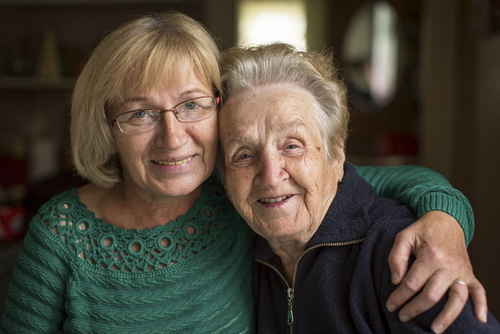
What Are the Symptoms of Parkinson’s Disease?
Parkinson’s disease is diagnosed in stages based on a person’s progressive symptoms:
- Stage I – Motor control symptoms experienced on one side of the body.
- Stage II – Motor control symptoms experienced on both sides of the body.
- Stage III – Patients begin to struggle with balance.
- Stage IV – Patients experience changes in gait such as small, fast steps or freezing. They may also experience additional symptoms such as difficulty swallowing and an increase in non-motor symptoms such as sleep disorders, pain, mood changes, and skin flaking.
- Stage V – Patients lose mobility and must use a wheelchair or other device.
People with Parkinson’s disease may experience non-motor symptoms for many years before noticing any difficulty with mobility or motor skills. These symptoms may include forgetfulness, slower mental processing, constipation, loss of smell, trouble falling asleep or staying asleep, flaky skin (seborrhea), fatigue, and depression. Later symptoms of the disease may also include dementia, speech problems, and difficulty swallowing.
How Can You Help a Patient With Parkinson’s Disease?

Because loss of motor skills is a key symptom of Parkinson’s Disease, patients will need appropriate mobility assistance as the disease progresses. In the early stages of the disease, they may need assistance walking or exercising, while in the later stages they may need help functioning in a wheelchair.
One of the most important things you can do for a person with Parkinson’s Disease is to observe symptoms and report any progression or new challenges to the patient’s doctor. This ensures that the patient will receive the best possible treatment for his or her current symptoms. It is also important to involve people in their own care as much as possible as a means of preserving independence and self-esteem.
Here are some additional ways you as a caregiver can help Parkinson’s patients enjoy the best possible quality of life:
- Educate yourself – Make sure you understand what the disease entails and what symptoms you should watch for. This can help you detect progression of the disease early so that patients get appropriate medical care.
- Provide medication reminders – Taking medication as prescribed can make a huge difference in the experience of symptoms, but many Parkinson’s patients struggle with impaired cognition and forgetfulness. As a caregiver, you can help your patients by reminding them when it’s time to take medicine.
- Remain calm and compassionate – Parkinson’s can cause changes in a person’s mood and personality, which can create tension with caregivers and others around them. Patients may also become frustrated with loss of motor skills or mobility, and that creates a stressful environment. By remaining calm and supportive, you can help your patient work through these frustrations without adding more stress to the situation.
- Encourage activity – Changes in mobility may tempt patients to avoid exercise, but that can impair muscle function even more. The patient’s physician should approve any exercise program, and caregivers can help by supporting the patient as he or she participates.
- Encourage patients to participate in self-care as much as possible – Participating in their own care can help patients maintain a more positive outlook and higher self esteem as compared with having a caregiver perform all basic tasks for them. If necessary, modify activities to make them easier (for example, try using an electric toothbrush or shaver).
As a caregiver, one of the most important ways you can help someone with Parkinson’s disease is to maintain a positive environment and encourage them to remain active in their own care. By reducing stress and remaining supportive, you can promote a better quality of life as you provide Parkinson’s care at all stages.
If you are looking for ways to make a difference for patients with Parkinson’s disease or parkinsonism, consider joining our team of caregivers! At Cherished Companions, we view caregiving as a calling, and that’s why we’re ranked as one of the top caregiving agencies in Ohio.
Call or apply online today to join us in our mission!
If you want to know more about how to launch your career as a caregiver, download our Guide to Becoming a Caregiver today!
{{cta(‘fd91ef4e-8c26-4afa-89e4-5c75d647292e’)}}






